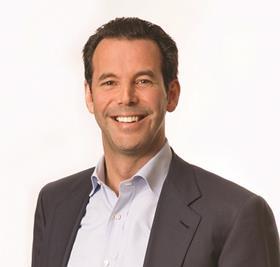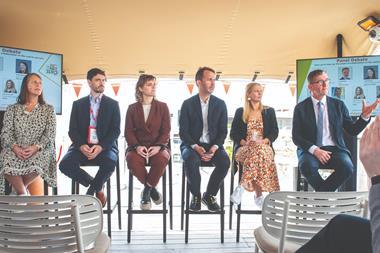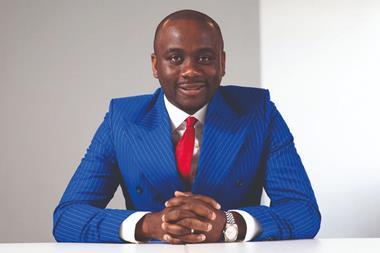Two years on from the largest municipal bankruptcy in US history, Motown is undergoing a revival. But how deep does the recovery run?

Michigan Central Station rises before you like an ancient ruin. Once a temple to transportation and the gateway for visitors to what was America’s fourth-largest city, the empty hulk has become a towering symbol of Detroit’s decline. Stripped by vandals and covered in graffiti, the once grand building, which was modelled on Roman baths, is now the first point of call for tourists eager to capture images of Detroit’s decay - or what has been dubbed ‘ruin porn’.
But when I arrive at the station (pictured) on a hot summer’s day, there is activity high up in the 18-storey tower - and it’s not scrappers or thrill seekers. Contractors’ trucks are parked outside and the unmistakable sound of building work drifts down on the breeze.
A deal between city hall and Manuel Moroun, the owner of the building and nearby Ambassador Bridge, which crosses the Detroit River to Canada, means the station is being fitted with 1,050 new windows. There are as yet no plans to redevelop the building, which has been abandoned since 1988 - but the deal, which saw the city exchange a tract of land with Moroun to enable the development of a second bridge, in return for improvements to the station and the neighbouring riverside park, is a small sign of a wider revival in Detroit that has been gathering momentum since the city collapsed into bankruptcy in July 2013.
Now, two years on from that nadir, which was the largest municipal collapse in US history, downtown Detroit is in the midst of a mini-boom: vacancy rates are falling, rents are rising, new businesses are moving in, abandoned towers are being refurbished and new development is under way. The unemployment rate has fallen to 10% - still twice the national average, but well down on the peak of 28% during the financial crisis, when president Obama was forced to bail out the automobile industry that is the Motor City’s lifeblood.
There is now talk of Detroit reinventing itself as a ‘tech city’ - a hub for advanced manufacturing and services and a home to entrepreneurs and start-ups. But in what remains one of America’s most dangerous cities, where violent crime rates are five times the national average, 36% of the population live in poverty (the worst rate of any US city) and there are 84,000 abandoned buildings covering an area larger than Manchester, how meaningful is it to talk of a revival? Is it a sustained recovery - or is it no more than window dressing?
You don’t need to travel far from Michigan station to see evidence of the new Detroit. Across the road in Corktown, an historic neighbourhood bordering the station, a small enclave of cafés, restaurants and shops has risen up amid a wider wasteland of abandoned buildings and empty streets. Centred on Slows Bar BQ, a restaurant and bar that, unusually for Detroit, is rammed full at midday on the Tuesday I visit, the area has become a hub for ‘hipsters’ and young creative types, the ‘millennial generation’ on which the new Detroit is pinning its hopes.
“Young people are crucial to what’s happening here,” says Sue Mosey, the president of Midtown Detroit Inc, an economic development company that has been driving the regeneration of the city’s Midtown. “We’re benefiting from the same dynamic every city in America is benefiting from, which is the millennials really wanting to live in cities. But we are benefiting from it at a slower rate than most American cities because Detroit is still a city of such extreme dynamics: racial dynamics; so much poverty; such wide swings in employment due to the auto industry peaks; and so much abandonment of the city by everyone who had money.”
White flight
That abandonment saw the predominantly white middle classes leave and the population fall by 65% to just 688,000 from around two million in 1950. The city, which was once 83% white and prosperous, was transformed into one that is 83% black and poor. With the city’s tax base eroded, dwindling resources were stretched increasingly thin, public services failed and crime rose, prompting further flight. This downward spiral, exacerbated by corruption and wider economic decline, culminated in Detroit’s bankruptcy in July 2013, with the city drowning in $20bn (£13bn) of debt.

But the bankruptcy was also a turning point. The city emerged from the process last November, writing off $7bn in debt and securing $2bn for public service improvements. Under the leadership of mayor Mike Duggan - a man with a reputation as a Mr Fixit - city hall has embarked on a turnaround strategy that has seen it work in closer partnership with the private sector to build confidence and attract businesses and residents back to the city - and the millennials have led the charge.
“We needed to get to a place, as a community and a municipality, where the proverbial can couldn’t be kicked any further down the road,” says Eric Larson, a leading property developer and the chief executive of the Downtown Detroit Partnership, a business improvement district covering the core Downtown area. A few blocks from Slows Bar BQ, Larson is leading the redevelopment of the old home of the Detroit Tigers, which will see the site of the major league baseball team’s former stadium transformed into a $32.6m mixed-use development that will include apartments, town houses and retail space.
Larson says the newly “business savvy” city hall has put in place a range of incentives and programmes - including tax credits, grants and other sweeteners - to attract investment and businesses to the city, and has built a reputation for competence that is instilling confidence in the private sector.
“We needed public sector leadership in place that was prepared to make very difficult decisions,” he explains. “In the past, it always felt like their backs were against the wall, but they had never really been forced against the wall. So the bankruptcy meant things couldn’t be put off any further.”
The city’s strategy is aimed at concentrating investment in key areas, such as Corktown and Midtown and the five other distinct neighbourhoods that form Detroit’s Greater Downtown area: a 7.2 square mile slice of the city that accounts for just 5% of the land mass, but more than 36% of the jobs.
This is in part a response to Detroit’s sheer size - at 139 square miles Manhattan, San Francisco and Boston could all fit within Detroit, yet it has around a fifth of the population of these three cities combined. The low population density means around 36% of the city’s residential lots are vacant or contain abandoned homes; almost half the city’s street lights don’t work; and the response time for high-priority emergency calls is 58 minutes (the US average is 11 minutes).
“In the past, we’ve tried to sprinkle fairy dust all over,” says Larson. “We could take the benefits of emerging from bankruptcy and spread it thinly across the 139 square miles; instead we’re concentrating it more densely in key areas and letting those areas radiate out into the less-populated areas.”
The ‘Gilbert effect’
Since 2006, more than $9bn has been invested in property development in Greater Downtown, but over half of this ($5.2bn) has been invested since 2013. The central business district in the core Downtown area, home to Detroit’s iconic “roaring twenties” art-deco architecture and, until recently, some of the world’s tallest abandoned towers, has soaked up more than half of that recent investment.
With around 85,000 employees, the one square mile Downtown is the city’s largest employment area and is home to established anchors such as General Motors, DTE Energy and software firm Compuware. Here the commercial office vacancy rate has fallen from 35.4% in 2011, the worst in the US, to around 16% today as a host of new occupiers are attracted to the city from the suburbs.
“There’s significantly more demand today than there has been in a very, very long time,” says Dave MacDonald, executive vice-president in JLL’s Detroit office, who has worked in the city’s commercial property sector for several decades. “Over the past 18 months in particular, the market has really shifted. It’s becoming the submarket of preference in south-eastern Michigan.”

In all, Downtown has added 16,000 new employees since 2010, with the lion’s share arriving when the Quicken Loans group of companies brought around 12,500 employees to a new corporate campus five years ago. The online retail mortgage provider is owned by billionaire Dan Gilbert, who also owns the Cleveland Cavaliers basketball team, and has been central to Detroit’s revival - not just as a result of its relocation to Downtown from the suburbs, but also through Gilbert’s extraordinary investment in the city. Since 2010, Gilbert has bought around 75 properties, many of which were vacant, in a $1.7bn spending spree. These are now being refurbished and let to new occupiers.
Walking around Downtown you can see signs of Gilbert everywhere - his property arm Bedrock Real Estate puts ‘Opportunity Detroit’ stamps on the buildings it purchases and many are daubed with murals by street artists, including Shepard Fairey, who designed the famous Obama ‘Hope’ poster. Jim Ketai, chief executive and co-founder, alongside Gilbert, of Bedrock Real Estate, says this is about enlivening the public space and changing perceptions of the Downtown area. He says it was never Bedrock’s intention to buy quite so many buildings, but “there has been so much opportunity, it’s been hard to resist”.
“A lot of these buildings have been neglected for 30 years and people have gone in and pilfered them,” Ketai adds. “You’d walk through them and they were absolutely disgusting. So you need a lot of vision and have confidence that you could turn it into something that people would want to occupy. We take one building at a time and just go crazy bringing it to life - and then they become these unbelievably beautiful buildings.”
Bedrock’s portfolio is now around 96% leased, with around 40 Quicken Loans group companies occupying 35% of the portfolio and the remainder independent tenants. Ketai says Bedrock does not always have a plan in place when it buys a building and its acquisition strategy is mainly driven by a desire to secure key locations and ensure buildings are brought forward for development and not held by speculators.
“Sometimes we have a specific idea for a property - but the majority of the time we feel we’ll figure it out and we’re buying it because we don’t want to have a ‘missing tooth’,” he says. “You don’t want someone who is just going to buy a building and squat and do nothing with it - you want your neighbours to be active and doing the same thing that you’re doing.”
But Bedrock’s plans extend beyond refurbishing office space. One of the first buildings bought by Gilbert was the Madison Building, an historic theatre that has been transformed into a thriving tech hub, with an incubator space and accelerator programme - backed by Gilbert - that hosts dozens of start-ups as well as more established firms, including Twitter. The building, renamed the M@dison, is at the heart of Detroit’s burgeoning tech sector, which is benefiting from the growing ties with the auto industry. Gilbert plans to lay super-fast broadband Downtown as part of what he calls the Detroit 2.0 vision of reinventing Motown as a vibrant tech city, where digital technology, media and entertainment businesses can take root and thrive.
Live, work, play
The blocks around the M@dison building are strikingly different to other parts of Downtown, where there is limited street-level activity and retail, and cafés and bars are few and far between. Around the M@dison is a bustling café, a small-plates restaurant and craft beer bar. The neighbourhood is also fast becoming a hot residential address and with occupancy rates across Downtown hitting 98%, there is significant pent-up demand.
In a bid to tap this demand, Bedrock is now moving into the residential market and recently purchased a pair of abandoned towers that it plans to convert into apartments. With rental rates approaching the $2/sq ft mark, which makes new-build viable, the firm is also planning a major new-build residential-led mixed-use development on the site of a former department store. “There is lots of residential happening - both by us and others,” says Ketai. “Developers are very interested because there is such a demand right now - if you want to live Downtown, or even Midtown right now, it’s very difficult to find something.”

It’s not just Gilbert who is piling into Detroit: along the riverfront St Louis-based developer McCormack Baron Salazar is planning a $60m residential scheme that will comprise apartments and town houses; meanwhile, just north of Downtown work is already under way on a $650m mixed-use development that includes a new arena for the Red Wings ice hockey team and a new entertainment district, as well as apartments, retail and some new commercial space. The scheme, called District Detroit, is being developed by Mike Ilitch, the billionaire owner of the Red Wings and the Detroit Tigers, and when completed it will connect Downtown with Midtown.
As is the case with Bedrock, both developments are backed by individuals with strong ties to Detroit: the Ilitch family and Richard Baron, a Detroit native who is chairman and chief executive of McCormack Baron Salazar. This is fairly typical of the investment market, which is mainly being driven by Motown residents, or investors from the suburbs and wider state, where there are some of the wealthiest counties in the US, says Larson. “We’re starting to see a little bit of outside investment, but it is opportunistic, discretionary investing, as opposed to institutional investing.”
To date there has been little or no foreign investment in the city, but this could be set to change. Carlos Slim Helú, a Mexican business mogul reputedly worth $77bn, recently purchased a downtown Detroit office building and there is speculation he may be about to embark on a spending spree. John Latessa, managing director of CBRE’s Detroit office, says he is increasingly fielding calls from investors from across the US, as well as foreign investors, including Brazilians, Chinese and Germans. But he says the interest is mainly in residential - either the conversion of office stock or new build - as the office market is not at the point that it can support new build, and refurbishment requires a significant capital outlay.
“Everyone sort of looks at the office market as a fairly unique scenario,” he says. “But let’s remember: five or seven years ago, Detroit wasn’t even in the conversation. Today virtually everybody that we meet with at least wants to know what is going on Downtown and what the options might be.”
One part of the market that has yet to really take off is retail. Downtown, the retail pickings are slim, with much of the ground-floor space empty. Fashion designer John Varvatos recently opened a store, but that, says Larson, is about creating “destination retail” to attract visitors from the suburbs, rather than serving workers and residents.
“We certainly need more amenity retailing and we’re working on that,” he says. “We will need to subsidise more heavily the early adopters and then as more proof and more residents come, you subsidise less and less and less, and hopefully sooner rather than later you’re doing market-rate deals.”
Ketai says Bedrock’s strategy is to put retail in the ground floor of all its buildings, but it has been holding off until the office and residential sectors build more momentum and the new M1 light rail link between Downtown and Midtown, which is currently under construction, is completed next year. “We didn’t want to rush people in while the M1 was being built. We knew how important it was not to have failures, so we held off,” he says. “We’ve got to get the right people in the right locations at the right time, and we’ve got a plan for that. There’s going to be a big influx of retailers and restaurants coming in as there is just so much interest.”
Where retail has been more successful is in Midtown, where there is a growing number of retail and restaurant clusters. Midtown is a low-rise, sprawling neighbourhood comprising a mix of historic housing, large abandoned industrial buildings and some key anchor institutions, including the Detroit Institute of Arts - home to Diego Rivera’s magnificent Detroit Industry Murals - as well as Wayne State University, a leading arts college, and two major medical institutions. As with Downtown, residential occupancy rates have hit 97% and the growing demand for more apartments is driving a mini development boom.
Back from the dead
Mosey, who has been leading the regeneration of Midtown for 27 years - and is seen by many as the district’s unofficial mayor - says there is growing interest from “major brands” wanting to set up in the area. This follows the arrival of Whole Foods Market in 2011 - “everybody thought that would be a disaster, but it’s been wildly successful,” she says - as well as other brands such as Will Leather Goods, craft beer restaurant HopCat and luxury goods manufacturer Shinola. The latter, founded by a Texan venture capitalist, is manufacturing and assembling its range of high-end watches, bicycles and leather goods in Midtown, as part of a strategy to trade on the Detroit brand and at the same time create job opportunities for locals.

Musician and Detroit native Jack White recently announced plans to open a music store in Midtown, while the latest major brand to sign up is Carhartt, which is headquartered in Michigan, but has never opened a store in its home state. “They’re taking a knockout of a building, and they’re a big viable brand and this is their only Michigan store, so you know it’s going to work,” says Mosey.
“I’m now getting calls from big international brands - they identify with Detroit, whether it’s around music, authenticity, manufacturing. They think great brand; good value, whether buying or leasing - and cool old buildings; and then they think they can do something about the employment rate and they want to train people here.”
But Mosey is equally keen to ensure local businesses and entrepreneurs are not crowded out - and Midtown Detroit Inc is providing seeding and ongoing support for start-ups. “We want the district to feel like it’s Detroit. You have to put a lot of energy and resources behind that as it doesn’t happen naturally,” she says. “These districts can go non-authentic really quickly. As we see it, we don’t need everybody to come to Detroit - we need segments of people who are builders, thinkers, adventurers, doers. Those are the people we need and they are coming here because Detroit is the poster child, you know? Who needs it more? No one needs it more than Detroit. And people like a challenge and they like to prove people wrong.”
The very fact Mosey is worrying about the consequences of gentrification shows just how far Midtown has come. She says the last three years have been a “game-changer” - and insists that this time the revival will be sustained. “I’ve seen a lot of fits and starts,” she says. “So it’s hard for people to drop the cynical thing, like: ‘Is something really going on here? Or is it just more window dressing?’ But I can tell you, this time it’s real.”
Clearly, huge challenges remain - not least the endemic poverty, unemployment and crime, and the sheer scale of the abandonment and blight. A recent study, undertaken by the federal government, recommended that of the 84,000 derelict structures across Detroit, 38,000 would have to be torn down at a cost of $2bn - with another 35,000 at risk of becoming so dilapidated that they may also need to be demolished. City hall has now embarked on a controversial programme of demolition and tore down 3,500 homes last year, while others have been saved by auctioning them cheaply to buyers who pledge to fix them.
Ultimately, however, if Detroit is to truly recover it will need to resize itself, argues Bruce Katz, vice-president of the Brookings Institute and an expert on urbanism. The city’s long-term plan - dubbed Detroit Future City - envisions that whole neighbourhoods will be transformed into parks or agricultural land - or literally returned to their natural state - with a denser city concentrated around the Greater Downtown core. “Detroit is the quintessential shrinking city and now it needs to reinvent itself,” saysKatz, who likens the challenge facing Detroit to that of New Orleans after Hurricane Katrina. “Physically it’s going to be a very different city 50 years from now.”
Katz says Detroit’s focus on building a strong core is the right approach and believes the city is well placed to benefit from the new innovation economy, particularly the growing connection between the auto sector and advanced manufacturing and technology. “When cities revive, they tend to revive from the core - and over the next five years that is going to accelerate,” he says. “I don’t want to minimise how difficult the climb back is going to be, but I think there is enormous momentum. The revival is real - but it still has a very long way to go. Let’s not forget, this was a city that was left for dead.”
It took Detroit 50 years to hit rock bottom and it may take as long again to reinvent itself and truly recover. But there’s no doubt that Motown is beginning to move to a fresh beat.































No comments yet